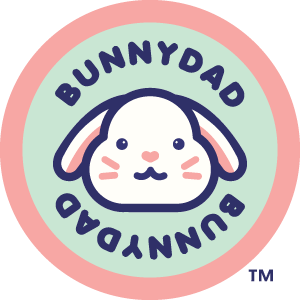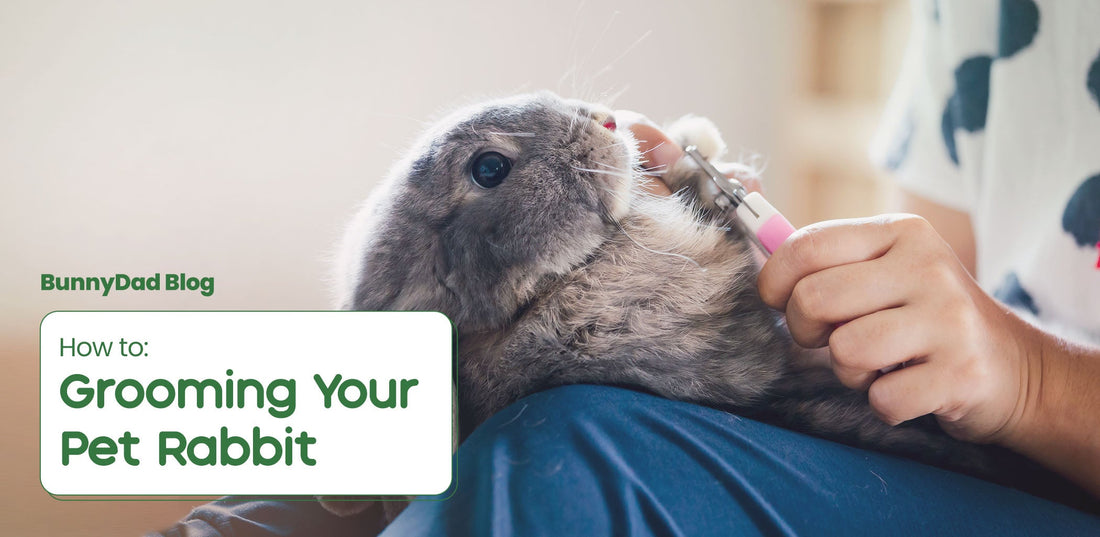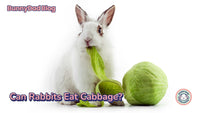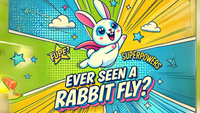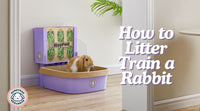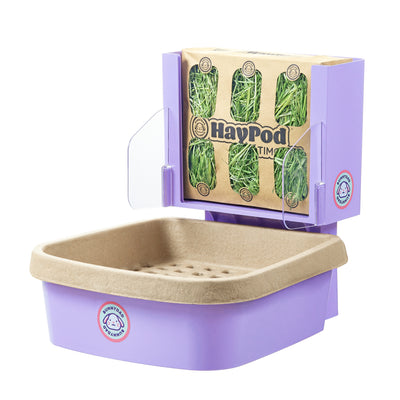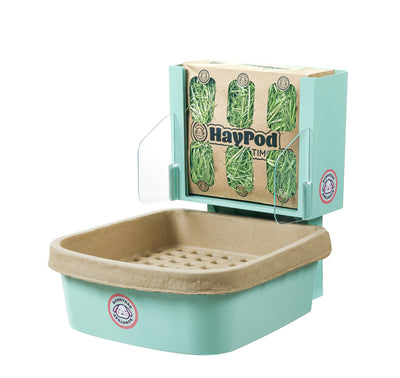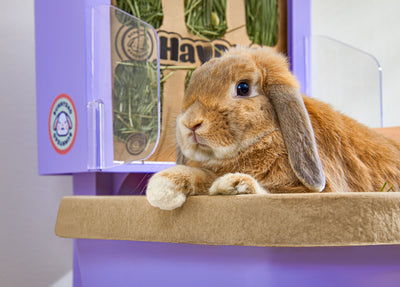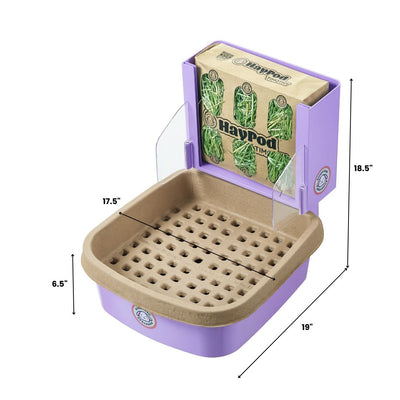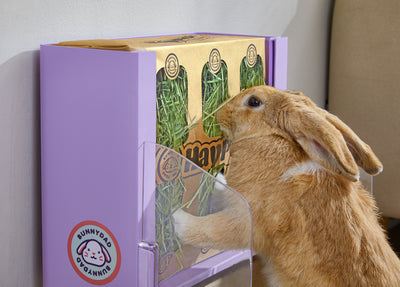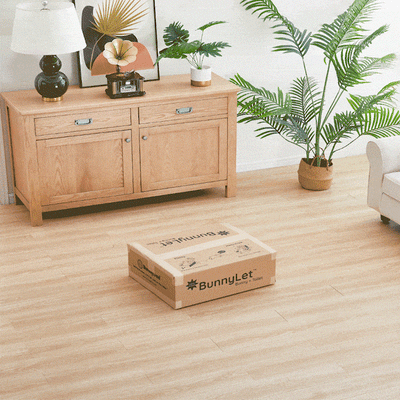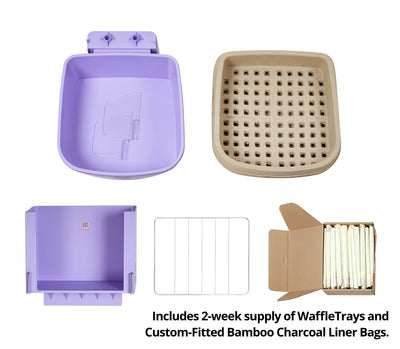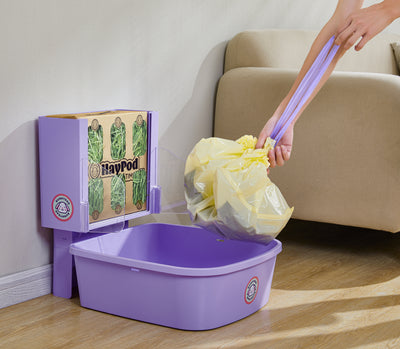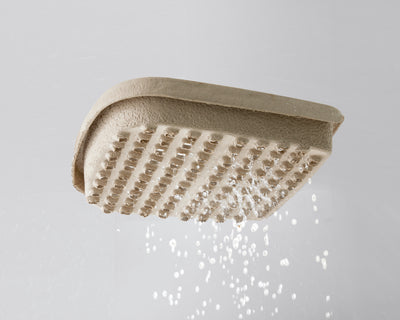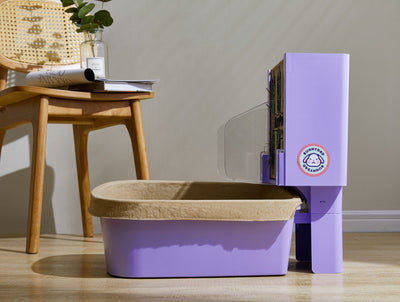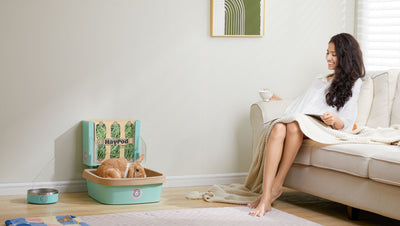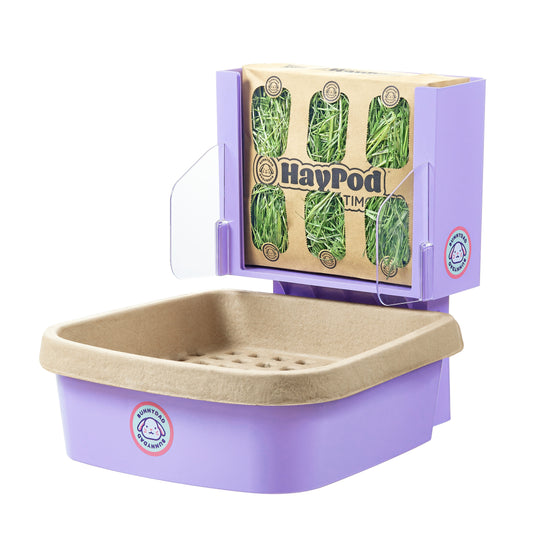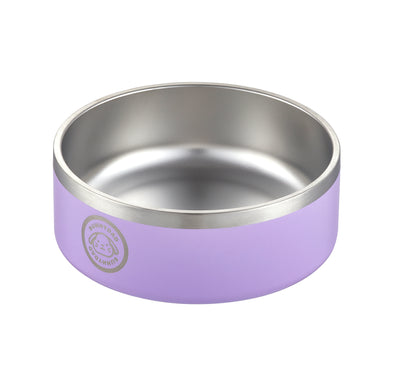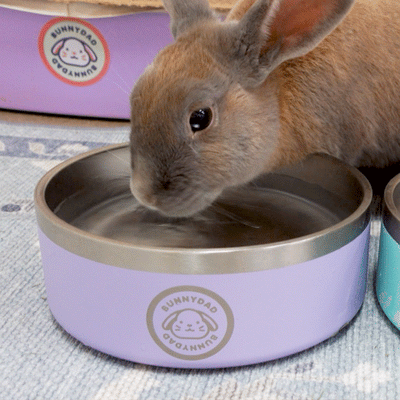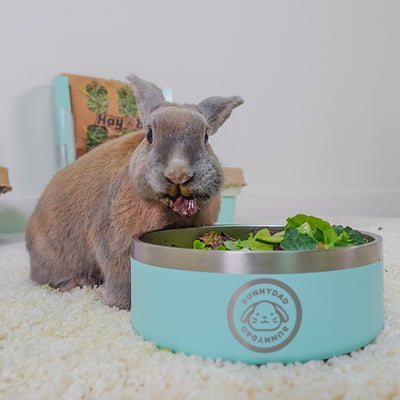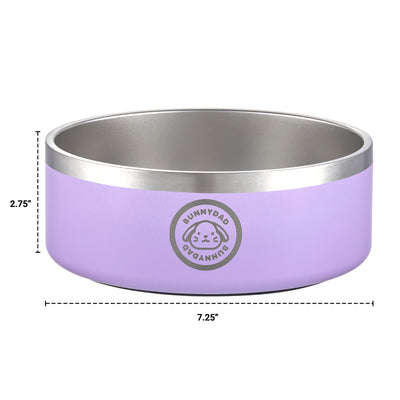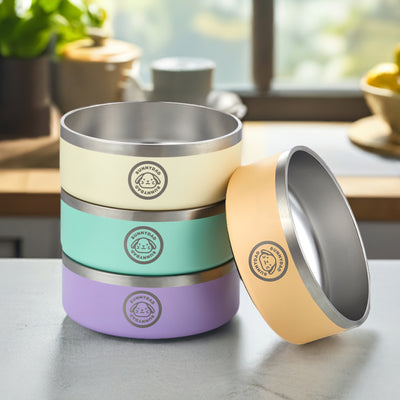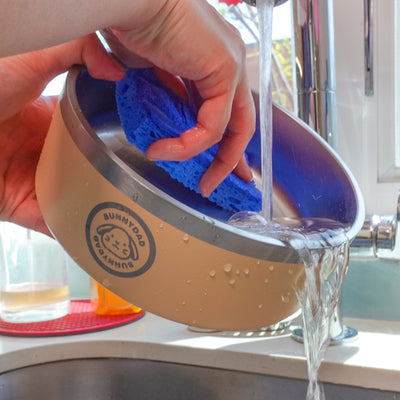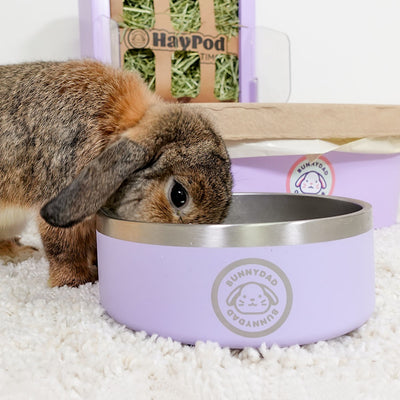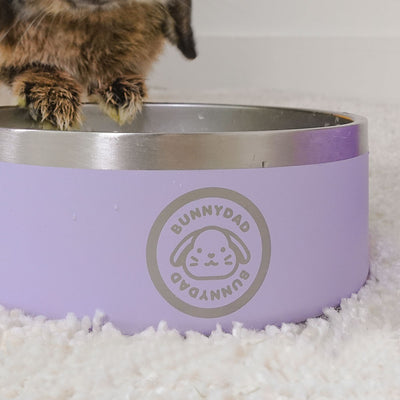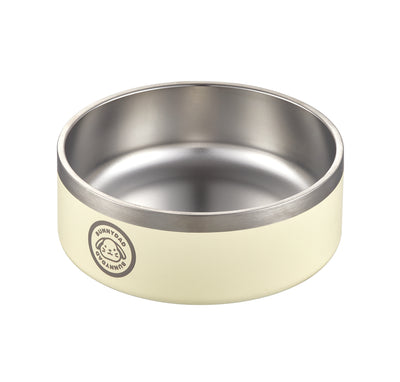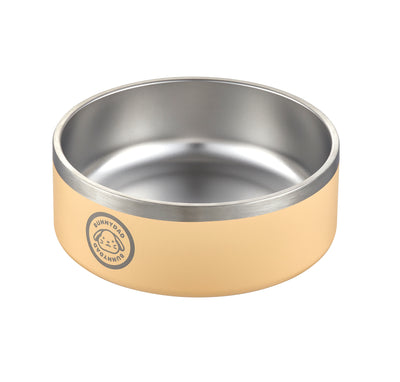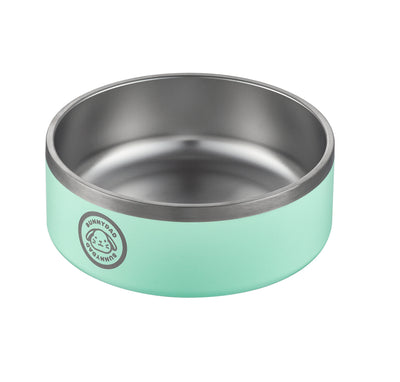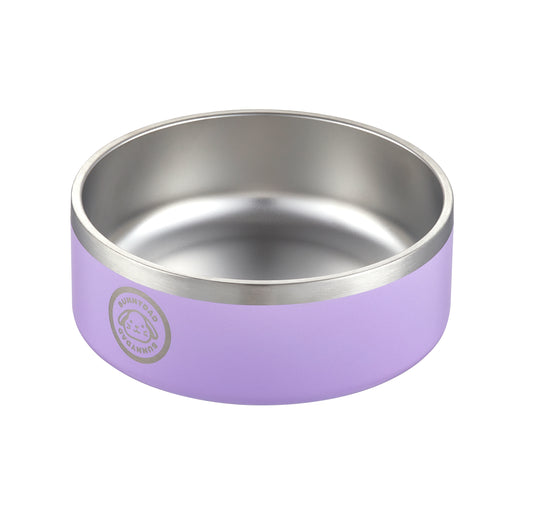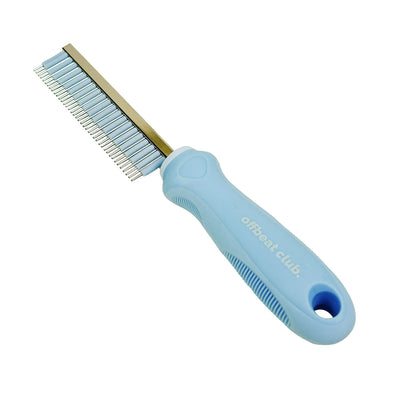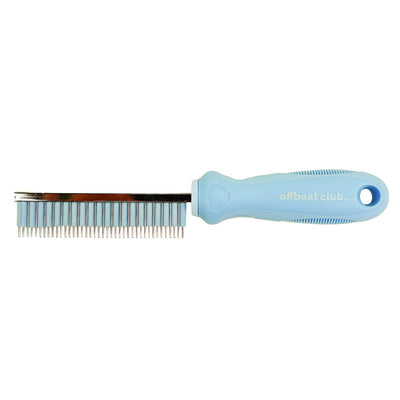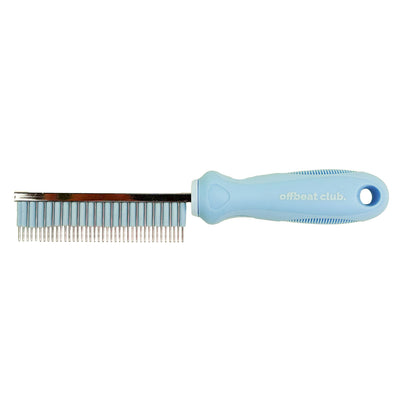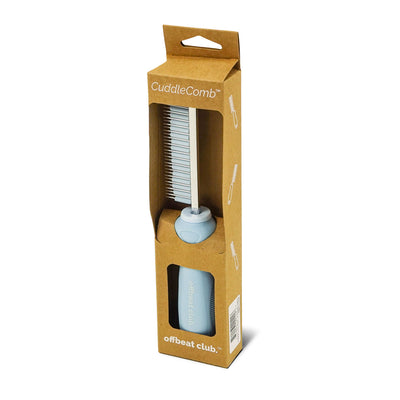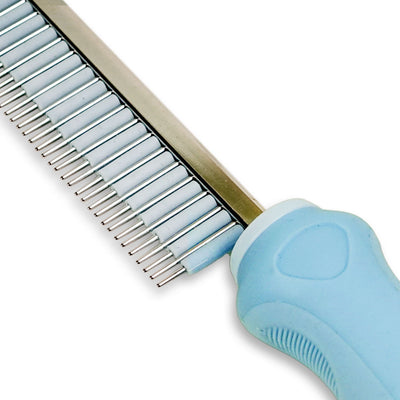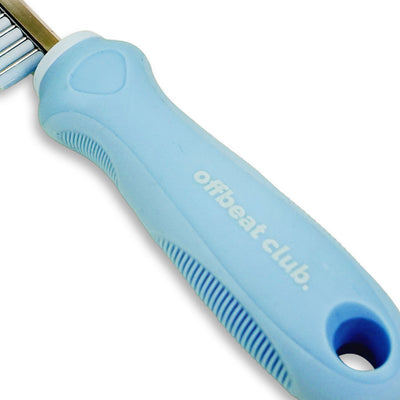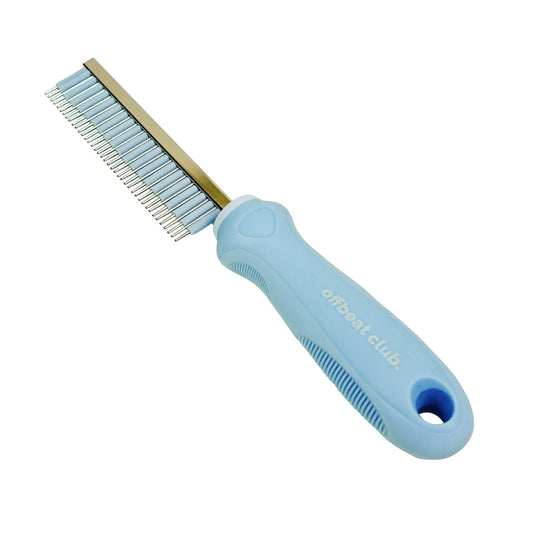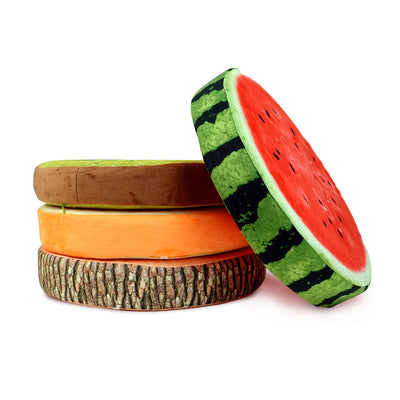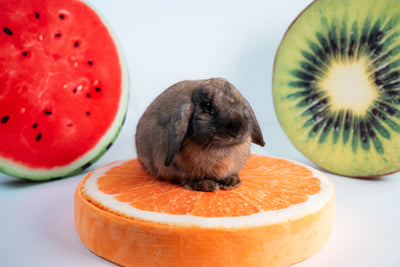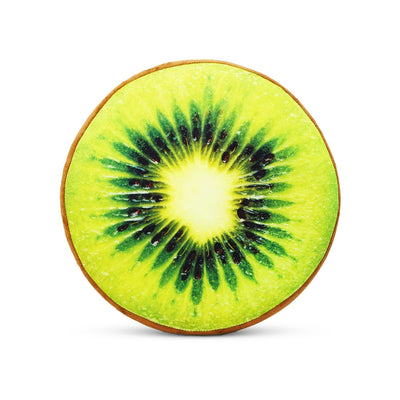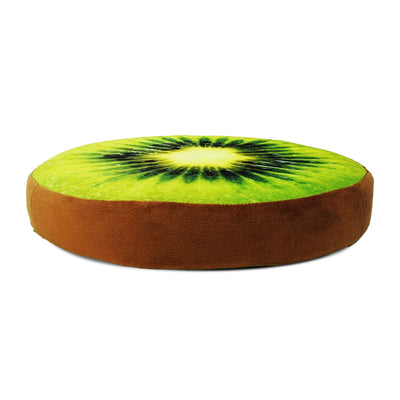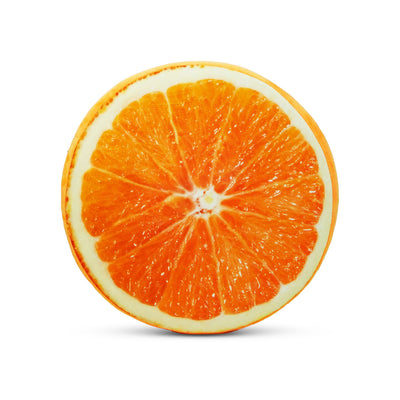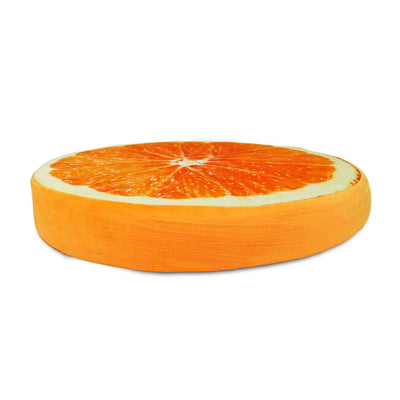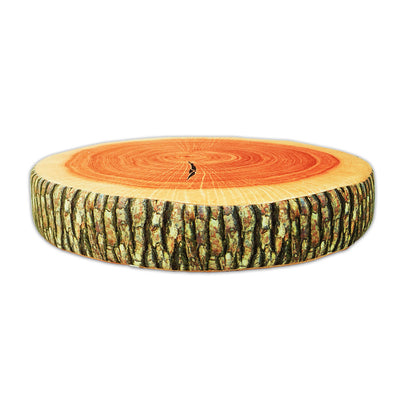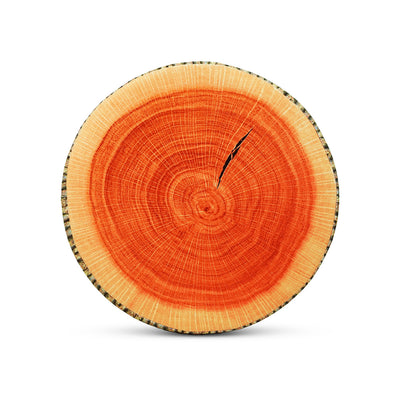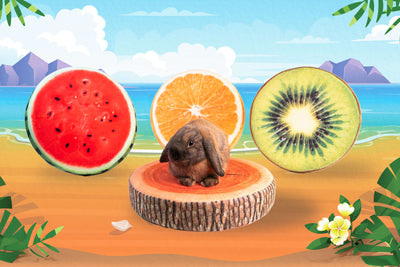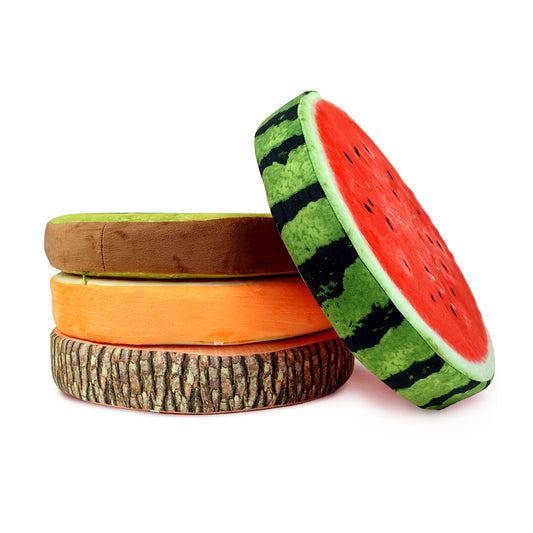Key Takeaways
- Essential Grooming Tools: Gather the necessary tools to ensure a smooth grooming process for your rabbit.
- Brushing Techniques: Learn proper brushing methods to maintain your rabbit's coat health.
- Comfort Tips: Implement strategies to make grooming a comfortable experience for your bunny.
- Routine Importance: Establish a regular grooming routine to promote your rabbit's well-being.
“Grooming Your Rabbit (Part 1)”
Welcome home, BunnyGang!
Whether you’ve just brought a new pet home, want to add to your existing pet-care routine, or you’re looking for ways to spend more quality time with an old friend, we’d like to help.

The Basic Bunny Grooming Tool Checklist:
- Grooming Comb* or slicker brush.
- Nail clippers
- Flea comb
- Mineral oil
- Eye wash
- Cotton balls or gauze pads
- Q-tips
- Disinfectant for cuts, scratches, and any other open wounds.
* BunnyDad’s Grooming CuddleComb is specifically designed to be the highest-quality grooming comb you’ve ever used. Go on, try it out. Your rabbit will thank you.
Grooming:
Grooming provides a perfect opportunity for building trust and comfort between you and your pet. In addition to establishing a routine that works for both you and your bunny, you can focus on making it a soothing and loving experience that you’ll both come to look forward to.

In general, rabbits require a significant amount of regular grooming and maintenance to help them stay feeling their best, so combining quality time with the grooming process will make it a much more enjoyable task to add to your daily routine.
Though most rabbits are typically fastidious self-groomers, they still need a fair amount of help from their humans in terms of hygiene, hair removal, nail-trimming, and general upkeep, as well as routine screening for various health conditions.
The good news is that with the right tools, you can do a great deal of this care yourself at home, before needing to take your bunny to see a professional groomer or veterinarian. As there’s a lot to cover here, we’ll split this blog into 2 parts.
Part 1 will highlight all the grooming basics, including the tools you’ll need, techniques for brushing, and tips for making your bunnies comfortable.
Part 2 will delve deeper into the important medical aspects of grooming, including inspecting your bunnies ears and fur for parasites, maintaining good eye health, and learning how to spot signs of rashes and skin disease.
Remember that a well-groomed bunny will live a much longer and happier life, and proactive healthcare and maintenance are always less expensive than emergency interventions.
First and foremost, let’s make sure you have all the tools you need!
TOOLS:
For the grooming process to be as successful and enjoyable as possible (for both you and your bunny), you’re going to need the right tools. This means:
a good comb or brush, nail clippers, flea comb, disinfectant for cuts, mineral oil for cleaning scent glands, eye wash, Q-tips, and cotton balls.
Complete List of Grooming Tools:
- Grooming Comb or slicker brush.
(We recommend BunnyDad’s Grooming CuddleComb, specifically designed for rabbits, with different lengths available for long haired and short haired breeds). - Nail clippers
- Flea comb
- Mineral oil for cleaning sensitive scent gland areas on the rabbit
- Eye wash for cleaning the eye area
- Cotton balls or gauze pads (for cleaning & stopping any potential bleeding)
- Q-tips for outer ear cleaning and scent gland cleaning
-
Disinfectant for cuts*, scratches, and any other open wounds.
(Betadine and ChlorhexiDerm are good over-the-counter options, and are available at most pharmacies)
(*Note: Avoid using Peroxide on deep cuts or punctures and NEVER use products that contain any painkillers/anesthetics like lidocaine.)
(*Note: Small shallow wounds can be cleaned with a clean cotton ball or gauze pad and some Betadine. If cuts are large, jagged, deep, or appear infected, or if you aren’t sure – go to your vet or emergency veterinary hospital immediately.)
Optional Tools:
- Mat Splitter
-
Scissors (for cutting mats - use with extreme caution and as a last resort)
- Mini Shaver (for long haired breeds)
BunnyDad’s Grooming CuddleComb:
BunnyDad’s CuddleComb is specifically designed to be the best comb you’ve ever used on your bunny. The rounded teeth are designed to be gentle on your pet’s skin, while effectively removing loose hair and preventing matting.
Our premium silicone bands alternate between each tooth of the comb for a perfectly even fur removal that won’t pull or tug on your bunny’s fur or leave any random bald patches.
In hopes of making life as easy as possible for you and your bunnies, we offer two different sizes of comb.
Our short/long comb options cater perfectly to all breeds of rabbit, meaning that every bunny will be able to receive the best grooming possible, regardless of the length of their hair. Our CuddleCombs are even great for cats, dogs, and guinea pigs!
Both combs are compact and easily portable, with the short comb measuring at 8.5”x1.5” with 1” teeth, and our long comb measuring 8.5”x1.75” with 1.25” teeth, so you can be sure to take it with you wherever you and your bunny may go.
Controls Shedding: Easily takes care of shedding, molting and everyday grooming needs. The CuddleComb is an excellent remover of any thick, matted fur as well as quick combings in thin, short fur in need of a touch up.
Tines gently massage skin to evenly distribute oils through hair for a shiny coat while preventing hairball issues.The alternating silicone bands ensure that your pet is properly groomed without leaving any bald spots.
Ergonomic design: Rubber grip on the CuddleComb is designed to keep your hands comfortable as you spend time combing your pets.
The specific tools that will work best for you and your bunny will depend largely on the routine you establish together, and can be adjusted or added to as you gain familiarity with the needs of your pet.
On to the Grooming!
Grooming Space:
The most important way to begin the actual grooming is by clearing a clear and comfortable space for your bunny to be. A large, high flat surface like a table, roughly chest height to you, will work best. It’s important you give yourself enough space to comfortably groom your rabbit, and a high surface will keep most bunnies from leaping off the table.
While grooming, you want to make your bunny as comfortable as possible, so adding a thin cushion and a towel to this surface is a great idea. You also want to make this process comfortable for yourself, so finding a surface that’s the right height for you is very important.
Finding a surface that’s the right height will also help you avoid straining your back, something important to consider, especially if your bunny is a bit of a wriggler.
Now that you’ve got your space set up, and your tools at the ready, it’s time to get your bunny. Most rabbits prefer having their feet on the ground and don’t love being picked up.
There are times when we’ll need to pick up our rabbits, as in the case of grooming, but it’s important to minimize the uncomfortable parts of this process as much as possible.
With this in mind, avoid chasing your rabbit, as they’ll always view that as a threat to their safety. Rather, wait until your bunny is relaxed, dozing, finishing using their litter box, or enjoying a snack. (Pro Tip: Keep a good supply of treats near your rabbit’s grooming table to help persuade your bunny that this can be an enjoyable activity.)
Gently pick up your bunny in a calm and reassuring manner and place them on the table, making sure to maintain contact the whole time.
Most rabbits will need some getting used to the grooming process, so starting out with a lot of gentle stroking is a good way to get your rabbit accustomed to the space and activity.
If your bunny does wriggle a bit, that’s okay. Continue supporting your rabbit’s torso, while reassuring them physically and verbally until they get more relaxed. If your rabbit is wriggling too much, they might be too scared or excited for you to safely proceed.
In this case, you may need to stop completely and allow them to calm them down before you’re able to try again. Remember that all healthy care routines are built on trust, patience, and consistency. If the process continues to be overly stressful or scary for your bunny, a professional groomer or veterinarian may be able to provide you with support.

Beginning Grooming:
While stroking your bunny and getting it comfortable with the grooming table, check its butt and underside for any signs of diarrhea, excess urine, or any droppings stuck in the fur.
Remove all detritus and wipe your bunny clean, and call your vet if you notice signs of diarrhea. Making sure your rabbit’s litter box is changed regularly is important for your bunny’s health and quality of life, so always double check that they aren’t being forced to sit in their urine or droppings.
Brushing:
Some type of grooming routine should be a daily ritual for all rabbits. While daily brushing isn’t always necessary for short haired breeds, a daily health inspection is a great way to stay proactive about your bunny’s health.
They'll ensure that you catch problems quickly, before they develop into harder-to-treat conditions, and cause your bunny more pain or discomfort than they need to.
A good daily inspection should involve examining their ears, eyes, fur and paws for any irregularities like any injuries, rashes or irritations, parasites, grass seeds, or other debris.
A thorough brushing every 2-3 days should be enough to keep your bunny’s fur clean and tangle free. While a rabbit is shedding its coat, however, which it will do roughly every 3 months, daily brushing may become necessary, in order to remove all the excess fur, preventing your rabbit from ingesting it or getting tangled.
This will also help to keep your rabbit’s home hygienic, and allow your bunny to better regulate their body temperature.
The rate at which rabbits shed their old coats can vary depending on each bunny, and typically lasts anywhere from a few days, to a few weeks. Luckily, all the trust you’ve built up with your bunny through your daily inspections and regular brushings, will put them much more at ease as daily brushing becomes more a part of their routine.
If your schedule allows you to do so all the time, a gentle daily brushing routine, even for just a few minutes a day, is sure to expedite the bonding process between you and your pet.
In the case of long haired breeds, while they will require the same daily inspections as short hairs, a thorough daily brushing is always recommended, as their fur is very prone to matting and catching hay and other debris before they work their way down to a rabbit’s skin.
Hair Trimming:
Trimming your rabbit’s fur can be a good way to prevent mats, tangles, and fur ingestion, so if you choose to, and feel comfortable doing it yourself, you can trim your rabbit’s hair down to about 1 inch. Always take extra care when trimming your rabbit, as their delicate skin is so prone to tearing.
Rabbit’s have very delicate skin that’s very susceptible to cuts and tears, so using scissors to remove mats should be seen as a last resort.
Mat Removal:
Pick up your bunny with both hands, then move them into a cradling position (just like a baby) in the crook of your arm. Place your free hand under the back, supporting the curve of their spine, and position them in your lap.
This is the best way to check your bunny’s belly, leg joints, butt, and genital area for any mats. Gently stroke your rabbit’s fur, feeling for any mats. Be sure to lift the tail, as this is a common place for mats to develop.
If you do find a mat, hold your bunny in a comfortable yet firm position (without grasping them, as this can hurt them if they try to twist away). With your index fingers and thumbs on both hands, gently separate the mat in different directions.
Never pull the mat away from your bunny, as this will hurt them and could tear their sensitive skin. By separating the clumps of hair in different directions, without pulling the hairs away from the skin at all, you should find that after not very long, the mat easily lifts up and will effortlessly come away from your bunny.
Additionally, mat splitters or mat rakes can be helpful tools to break up very tough mats. Just keep in mind how delicate a rabbit’s skin is, so make sure to take your time with these tools and not risk cutting or tearing your bunny’s skin.
For the well-being of your pet, if you ever find yourself unable to un-mat your rabbit, consult a professional groomer or veterinarian as possible.
Now, we’ve made sure you’ll be getting off on the right foot, let’s talk about trimming your rabbit’s nails.
Nail Trimming:
Keeping your rabbit's nails trimmed is a crucial step in preventing injuries and will allow your rabbit to move around much more freely and comfortably. Here are some easy steps to follow to safely trim your bunny’s nails:
Rabbit paws and nails can be sensitive, so first, make your rabbit comfortable with you handling their paws. You can do this by handling their paws gently during your regular grooming sessions. This will normalize the behavior, so that they won’t get anxious when the time comes for you to actually cut their nails. Talking affectionately to your pet and offering treats throughout this process is also sure to help your bunny learn to enjoy themselves.
Nails should be kept trimmed to avoid injuries to themselves and others (rabbit’s nails can get very sharp!).
The frequency with which you’ll need to trim your rabbit’s nails will vary depending on each rabbit, possibly as well as their diet. Typically, an adult rabbit will need to have its nails trimmed at least once every 6-8 weeks, however, many pet owners prefer to trim their pet’s nails in small increments once a week or as soon as any nail growth is perceptible.
This allows the rabbit to become more accustomed to the process, and there is a lower risk of accidentally cutting off too much of the nail or damaging the quick.

When clipping a rabbit’s nails, use small, sharp nail clippers specifically designed for small animals. Avoid using regular scissors, as they can crush the nails and damage the quick.
Incorporating a mesh net can help you isolate the nail from the fur as you cut. A small flashlight can also be a very useful tool in this process. Just shine the light up through the rabbit’s nail and you’ll be able to see the edges of the quick (the pink part).
You never want to cut the quick on a rabbit’s nail, as this will hurt your rabbit and cause its nail to bleed. Holding your rabbit gently, yet firmly, and either in your lap or on the grooming table, extend one paw at a time.
Trim just the tip of the nail, being careful not to cut too close to the quick. If you do accidentally cut the quick and it bleeds, apply bunny-safe antiseptic to clean the wound and apply pressure with gauze or a cotton ball until the bleeding stops.
The quick is very easy to see on rabbits with light colored nails, but visible on all rabbits, especially with the use of a flashlight under the paw.

If at any point of the nail clipping process, or the grooming process in general, you feel unsure of what to do, fear you may be hurting your rabbit, or just need a second opinion, you can always consult a professional groomer, or call your local veterinarian’s office.
trimming baby rabbits’ nails:
Baby rabbits have very sharp, small nails, so a nail file may work better than clippers. Always use an abundance of care when trimming your bunny’s nails, and keep cotton balls and antiseptic nearby in case you do make a mistake and your rabbit's nail starts to bleed.
Apply pressure to the cotton ball for about 30 seconds to a minute and the bleeding should stop. Your vet can also clip your pet's nails during a checkup, and they’ll likely be happy to demonstrate how to do it on your own. Baby rabbits will need to have their nails trimmed roughly once a month.
As you can see, grooming your bunny can be a multi-step, multifaceted process, which is why creating a thorough grooming routine is essential to your pet’s quality-of-life and well-being. The time and care that you spend will come back to you in dividends in terms of the trust and affection, health-related costs, and overall well-being of your buddy.
Creating a consistent grooming routine is vital for the well-being of your rabbit. Grooming your pet can also be a wonderful way to connect, check in, and bond while you spend some quality time together.
Talking to, cuddling, and bonding with your bunnies as you groom them is guaranteed to strengthen your relationship, and conveniently, it will also make the grooming process significantly easier by helping to put your rabbit at ease.
Building trust is everything when caring for someone smaller than you. If you look at your daily grooming rituals as time to enjoy each other’s company, in addition to keeping your bunnies healthy and feeling their best, it’s likely you’ll both start to look forward to the process.
We hope this blog has helped you along in your grooming journey, and in forging an even stronger bond with your pet! Check back in soon for Part 2, where we cover the medical aspects of grooming, including eye care, parasite inspection, and flea treatments.
See you soon, BunnyGang!
~ BunnyDad
For more great guinea pig content, check out our other blog posts at:
https://guineadad.com/blogs/news

